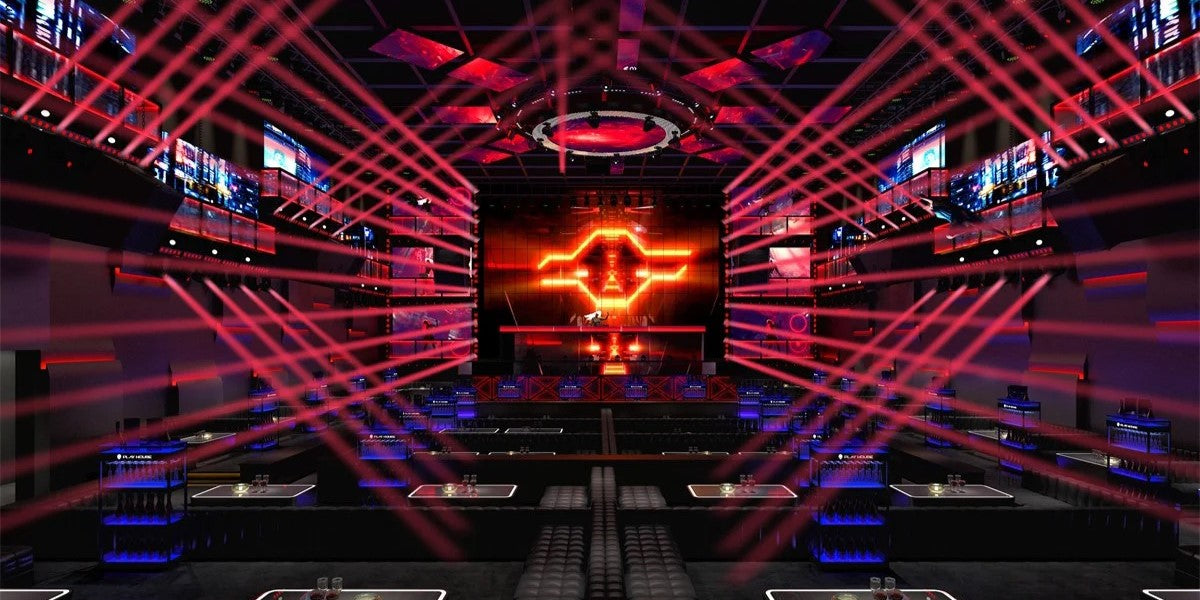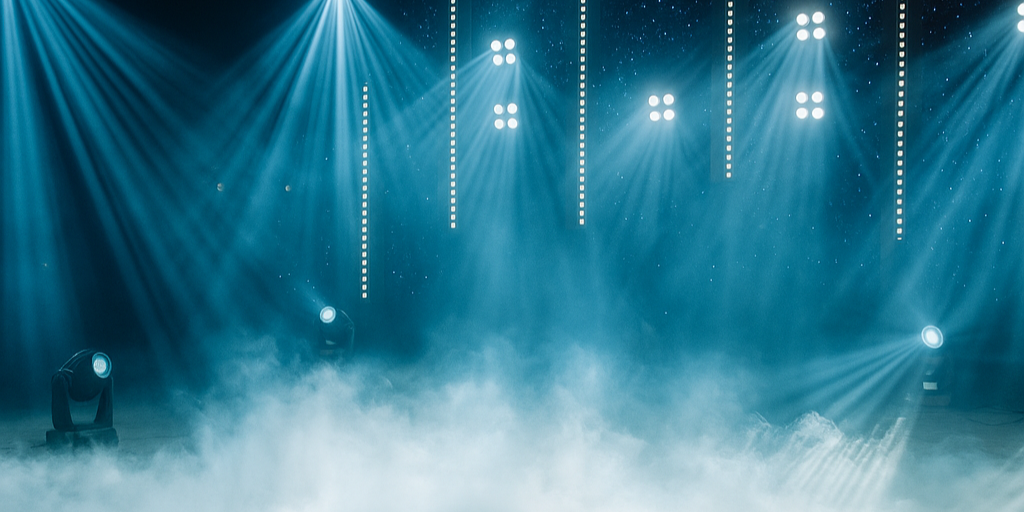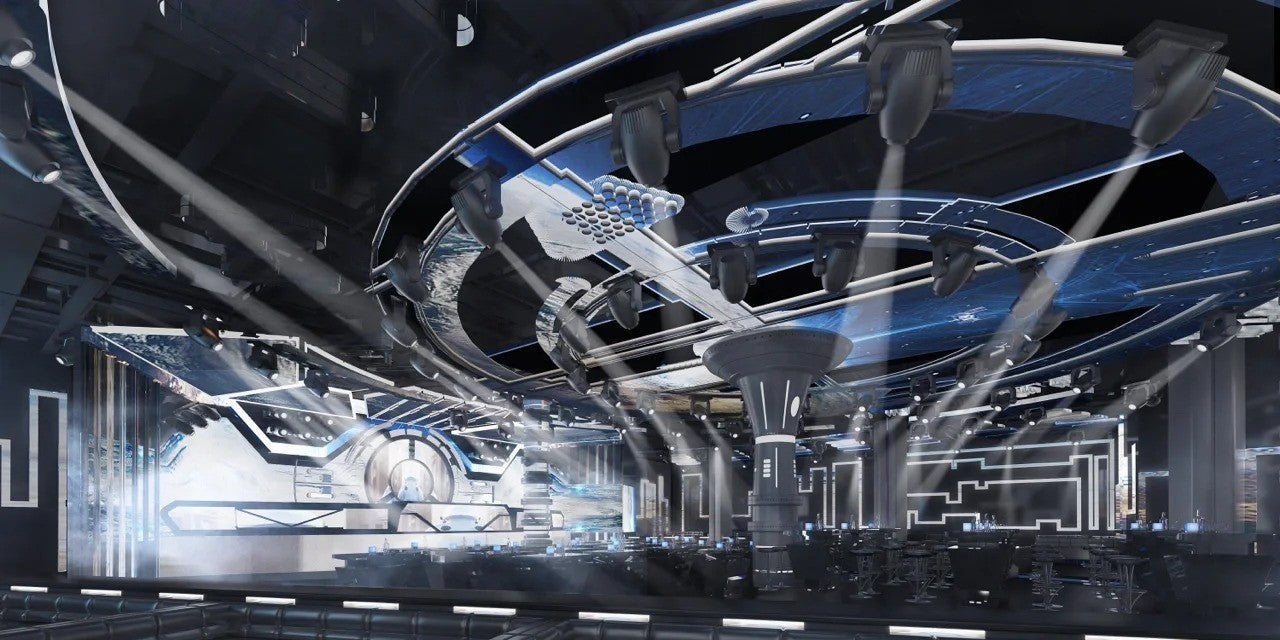バーのステージ照明を改善したいとお考えですか?照明器具の役割、照明ゾーン、制御モードの基本原理を学び、高度な機材や照明コンソールがなくても、雰囲気、奥行き、リズムを演出できます。
バーの照明が雑然として、期待通りの効果が得られない理由
「ムービングヘッド、ウォッシュライト、ストロボも使っていますが、それでも何かがおかしい気がします。」
「照明には色と動きがあるのですが、本当の雰囲気がありません。」
これは、パフォーマンス重視のバーで最も一般的な照明の問題の 1 つです。
問題は照明器具の不足や、間違った照明器具の使用ではありません。照明設備に構造が欠けていることが問題なのです。照明が個別に調整されずに点灯すると、視覚的に雑然としたステージとなり、観客の視線を誘導したり、緊張感を高めたり、パフォーマンスのエネルギーを支えたりすることができません。
一般的な兆候は次のとおりです。
- 同期せずに異なるパターンを実行するフィクスチャ
- 焦点のない色や効果が多すぎる
- 観客席の照明と演奏者の照明が明確に区別されていない
- 音楽のリズムや強弱に合わない照明
解決策は機材をシンプルにすることではなく、それぞれの照明がどのような目的で設計されているかを理解し、それらが意図を持ってどのようにレイヤー状に連携して機能するかを理解することです。照明は、ソロパフォーマーの集まりではなく、チームのように機能するべきです。

照明器具の役割を理解する:各照明器具の実際の役割
照明デザインは、照明器具の数だけでなく、それぞれの照明器具が全体の中でどのような役割を果たすかを考えることが重要です。照明器具に搭載されるすべての照明にはそれぞれ目的があり、その目的は光学的な挙動、位置、そして制御方法によって決まります。
バー会場で使用される最も一般的な 4 種類のステージ設備と、それらの実際の目的について詳しく見ていきましょう。
ビームライト
目的: 集中したエネルギー、動き、空中パンチ
- ヘイズを切り抜ける狭角高強度ビーム
- リズムと方向性を構築するのに最適
- 背面または上から対称または交差パターンで使用すると最も効果的です
- 150W以上の出力と狭い光学系を備えたコンパクトなビームムーバー(e.gここでは通常、1.5~2°の角度が使用されます。
ウォッシュライト
目的: 色彩表現、雰囲気、空間の明確化
- ステージを「満たす」広角でソフトなエッジのライト
- ミッドゾーンまたは天井取り付け器具としてよく使用されます
- ゆっくりとしたフェードや固定されたカラーテーマで雰囲気を演出
- この役割には、ズーム可能な RGBW ウォッシュ ライト (7x40W 構成など) が一般的に選択されます。
PARまたはバーライト
目的: ターゲットを絞ったフィルライトまたはキーライト
- 演者、顔、建築要素を強調するために使用される
- ステージ前方に配置するのが最適
- 空間を圧迫することなく「視覚的な焦点」を定義するのに役立ちます
- コンパクトなハウジングとスムーズな調光機能を備えた高 CRI パーライト (60x2W 4-in-1 LED ユニットなど) は、小規模な会場で信頼性の高いフェイス照明を提供します。
エフェクトライト (ピクセルバー、リング、ストロボ)
目的: 視覚的な動き、質感、驚き
- ダイナミックエフェクト、ピクセルチェイス、ストロボパルスを追加する
- 主要な情報源ではなく、アクセントレイヤーとして最適です
- 視覚的な過負荷を避けるために、音楽や動きとタイミングを合わせる必要があります。
- ピクセル制御可能なライトバーやハロー効果のある照明器具は、モーションアクセントとしてここで重ねて使用されることがよくあります。
デザインのヒント:
5 つのフィクスチャを使用している場合は、それぞれのフィクスチャが次の質問に答える必要があります。
「このシーンで私は何をしているんだろう?」
そうすることで意図を構築し、混乱を排除することができます。
制御モードが想像以上に重要な理由
照明制御は、DMXコンソールや高度な照明卓を使用するプロフェッショナルだけのものではありません。バー、特に小規模な会場では、適切な制御モードの選択は、効果的な照明デザインにおいて最も見落とされがちな要素の一つですが、同時に重要な要素でもあります。
専用のコントローラーがなくても、照明器具は調和して動作する必要があります。そこで、内蔵の制御モードが役立ちます。
一般的な制御モードとその機能:
自動モード
事前にプログラムされた照明シーケンスを連続的に実行します
→ アンビエント効果、静的なカラーループ、または一般的な背景の雰囲気を作成するのに最適です。
サウンド起動モード
通常は低周波ビートからの入力音声信号に反応します
→ DJ セットやライブ パフォーマンス中に照明効果を音楽と同期させるのに最適です。
マスタースレーブモード
1つの器具(マスター)がDMXリンクを介して他の器具(スレーブ)に制御データを送信します。
→ 外部コントローラーを必要とせずに、複数のユニット間で正確な同期を可能にします。
これらのモードが重要な理由:
- フィクスチャの動作を統一することで視覚的な一貫性を促進します。
- 手動でプログラミングしなくても、照明を音楽のエネルギーとダイナミクスに合わせることができます。
- 追加の機材や技術スタッフなしで、ショーにリズムとまとまりを与えることができます。
照明モードの一貫性の欠如、効果の速度の不一致、またはビジュアルの不一致が、照明器具自体ではなく、混乱した照明の根本的な原因となることがよくあります。
適切に選択された制御モードにより、最小限のセットアップでも構造化された意図的な照明を実現できます。

次は
フィクスチャの役割と制御ロジックを理解したら、次のステップはシンプルだが効果的なレイアウトを設計することです。
チャットで相談:バーのセットアップに合わせた照明アドバイスを受ける → https://betopperdj.com/




コメントを残してください
全てのコメントは、掲載前にモデレートされます
このサイトはhCaptchaによって保護されており、hCaptchaプライバシーポリシーおよび利用規約が適用されます。